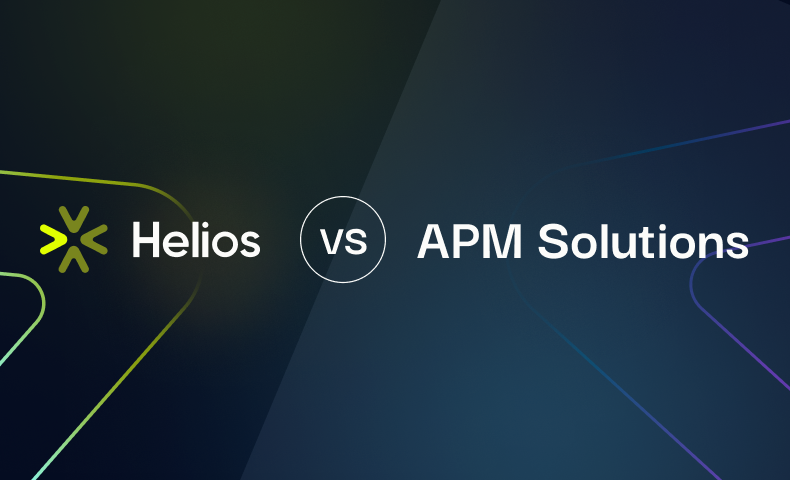Application Performance Monitoring (APM) is a domain of solutions focused on helping DevOps and SRE teams maintain system availability, and optimize the service performance of their production environment.
Though some of the capabilities of APM solutions also address developers’ needs, they do so partially; developers face challenges around building cloud-native and distributed applications much earlier than in production. The granularity of the data, as well as the features built on top of it, are not aimed at helping developers with day-to-day tasks such as building new features, reproducing issues, and testing applications.
That’s where Helios comes in. Helios is a developer platform that helps increase dev velocity and productivity when building cloud-native applications. It accelerates R&D work, streamlining activities from troubleshooting and testing to design and collaboration, across all environments.
The following are the main differences between Helios and APM solutions:
| Helios | APM solutions | |
|---|---|---|
| Use cases |
|
Production monitoring |
| Target audience | Developers | SREs and DevOps |
| Focus | Accelerate dev velocity across local -> staging -> production environments | Enable DevOps and SRE teams to maintain system availability and optimize service performance |
| Data collected | All interactions, including HTTP and messaging payload data | Interactions metadata (duration, statistics, etc.)
Does not include HTTP and messaging payload data |
| Tracing | Core functionality. Full visualization capabilities. |
Side functionality.
Visualization of large traces is cumbersome. |
| Installation | Simple and agentless installation | Agent-based |
| Pricing | Usage-based, predictable | Host-based, unpredictable |








